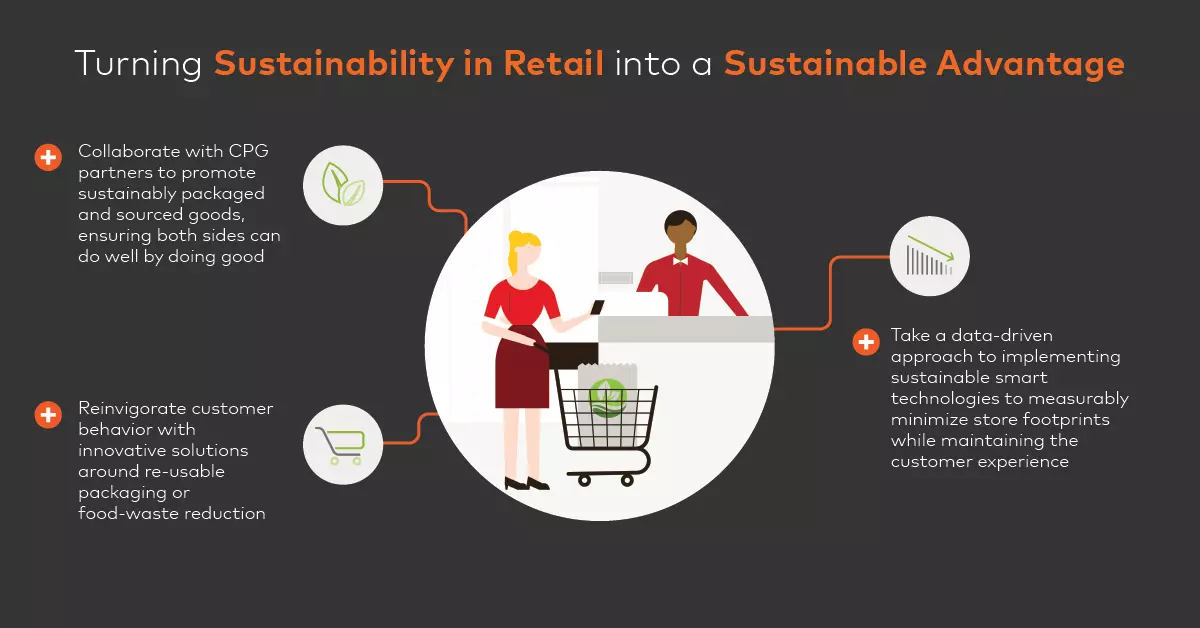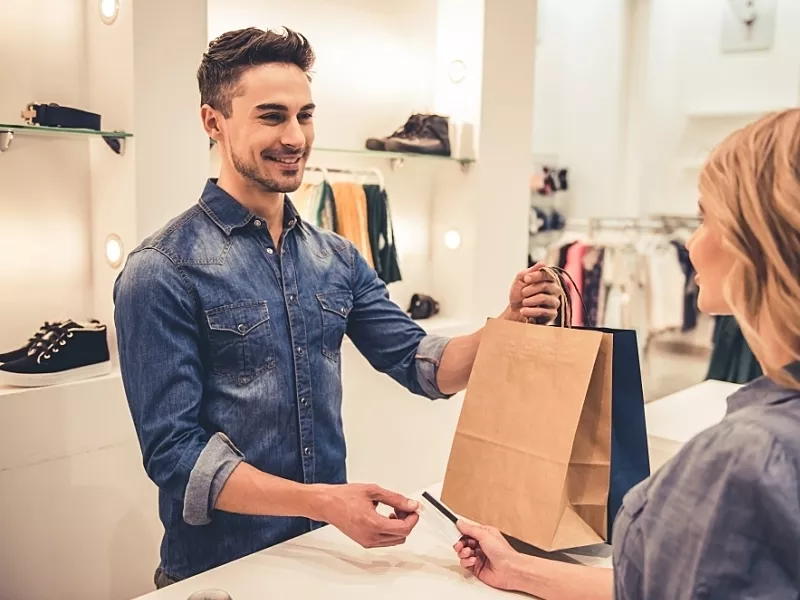How to Make ‘Business as Usual’ More Sustainable in Retail
“It’s time for ‘doing well by doing good’ to become business as usual,” says Ajay Banga, president and CEO of Mastercard.
Indeed, with 66% of all consumers—and 75% of millennials—willing to pay more for sustainable brands, it’s time for sustainability to become a central part of how retailers and consumer packaged goods (CPG) companies operate. Already, 40% of brand owners have responded by moving toward more sustainable packaging. Retailers are similarly demanding more sustainably packaged goods on their shelves, with some opting for no packaging at all.
These efforts in packaging illustrate just one facet of sustainability. As environmental concerns become top-of-mind across industries and customer segments, leading organizations are investing heavily in sustainable product development and practices. Their efforts include fair trade, supplier diversity, ethical sourcing, renewable energy, water conservation and reduced carbon footprint.
At Mastercard, “doing well by doing good” has always been a core part of our business. By working with a variety of partners across the world, we have made significant strides in scaling sustainable initiatives in inclusive growth and environmental stewardship.
Sustainability in retail faces a unique situation, however, as the separation between manufacturing and retail sales can create conflicting interests in space allocation, but also significant opportunities to advance zero-waste and sustainable packaging initiatives. With stores acting as the primary touchpoint between retailers and their customers, in-store changes can have direct implications for the customer experience. To turn sustainability into a sustainable advantage, retailers and CPGs need to take a data-driven, collaborative approach.

The Chicken and the Egg… and the Carton
Effective consumer goods packaging goes beyond simply protecting a product; it functions as an extension of the product and a principal expression of a brand’s story. Increased consumer concern about the origins of products and their surrounding packaging is pushing sustainability to the forefront. Moreover, the incredible growth of sustainable-marketed products has made the subject top-of-mind for both retail and CPG executives.
But the latent tension between manufacturers and retailers over the brick-and-mortar channel can complicate sustainability objectives. For example, while many manufacturers might be willing to reduce packaging, retailers may decide to use the extra shelf space to stock other brands to maximize sales. Such competing objectives can hinder a united push for sustainability.
To overcome these obstacles, manufacturers and retailers need to focus on a common agenda around sustainability as a whole. A precedent for such collaboration already exists in the sharing of sales data and upcoming promotions to inform inventory planning. By aligning on objectives and analytical methodologies, manufacturers and retailers can work together to rapidly test sustainable efforts—from recycled packaging to simplified ingredients and fair trade practices highlighted in product marketing—to meet growing demand while cutting back on waste.
Loop is a prime example of innovative collaboration. The organization has partnered with major consumer brands and retailers to provide re-usable packaging that customers can either bring back to partner retailers or ship back to the company. Harking back to the days of the milkman, Loop and services like it have become pioneers in the growing retail trend around bulk bins and zero-waste stores, where customers are encouraged to bring their own containers or borrow ones on deposit to rinse and return.
Promoting Sustainability in Retail with Smart Technology
The brick-and-mortar channel presents retailers with several powerful levers to drive sustainability. In addition to highlighting sustainable products and implementing zero-waste practices, retailers can take valuable steps toward energy reduction. By exploring new HVAC, refrigeration and renewable energy technologies – and promoting water conservation – retailers can minimize the environmental footprint of their stores. La Maison Simons, for example, garnered widespread praise for its zero-energy store in Quebec City.
These technologies pair nicely with food-waste reduction initiatives reminiscent of a time when not every apple had to be round, nor each chicken breast trimmed to perfection, and offcuts always had uses. Moreover, solutions like Wasteless are augmenting these lessons from the past with modern IoT technology that allows for dynamic pricing and personalized offers based on food expiration dates, inventory levels, store traffic and even weather.
For zero-waste initiatives such as these or Loop to succeed, manufacturers and retailers will need to learn how to reinvigorate traditional consumer culture and stimulate new habits without risking the customer experience.
Retailers should take care to understand not only the environmental impact of these changes but also the impact on customer satisfaction and sales. While dimming the lights during certain hours may slightly reduce energy consumption, it may also deter customers from strolling down the aisle. By testing these new ideas on a small scale, retailers can ensure changes materially impact energy consumption without harming the customer experience and the bottom line.
Through meaningful collaboration and smart implementation of sustainable tech, CPGs and retailers have an immense opportunity to do well by doing good. The leading brands of tomorrow will capitalize on this growing trend to include sustainability as a central component of their brand story.
Mastercard has a deep expertise in leveraging powerful data-driven tools to drive both business performance and sustainable initiatives. We are pioneering solutions across industries, such as the Greener Payments Partnership, as well as leveraging dynamic pricing and predictive analytics to reduce food expiration.
To learn more about how Mastercard can partner with retailers and CPGs sustainability using a test and learn approach, click here.










